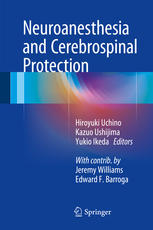

Most ebook files are in PDF format, so you can easily read them using various software such as Foxit Reader or directly on the Google Chrome browser.
Some ebook files are released by publishers in other formats such as .awz, .mobi, .epub, .fb2, etc. You may need to install specific software to read these formats on mobile/PC, such as Calibre.
Please read the tutorial at this link: https://ebookbell.com/faq
We offer FREE conversion to the popular formats you request; however, this may take some time. Therefore, right after payment, please email us, and we will try to provide the service as quickly as possible.
For some exceptional file formats or broken links (if any), please refrain from opening any disputes. Instead, email us first, and we will try to assist within a maximum of 6 hours.
EbookBell Team

0.0
0 reviewsThis book is a knowledge-based text that covers the anatomy, neurophysiology, and neuropharmacology needed to carry out the necessary management and cerebrospinal protection during neuroanesthesia. Especially to make the subject of neuroanesthesia more approachable, we introduce surgical measures utilized in neurosurgery, cardiovascular surgery, neuromodulation, and related procedures.
The main purpose of neuroanesthesia/neurocritical care is to deliver cerebrospinal protection in neurosurgical and cardiovascular surgeries. How should we select the best anesthetic management to prevent neurological complications for patients who, for instance, undergo different types of surgery for subarachnoid hemorrhage, stroke, head trauma, carotid endarterectomy, or cardiovascular surgery under cardiopulmonary bypass? These pathological conditions include the risk of transient cerebrospinal ischemia, and if our management is not precise, it may induce serious neurological sequelae. Although there is an urgent need to establish the treatment and elucidate the molecular mechanisms of cerebrospinal injury, many components are intertwined, making this a challenge we have not completely solved yet.
This volume makes the management of neuroanesthesia more accessible not only for primary residents but also for specialists, providing a valuable resource on the current perspectives of neuroanesthesia.